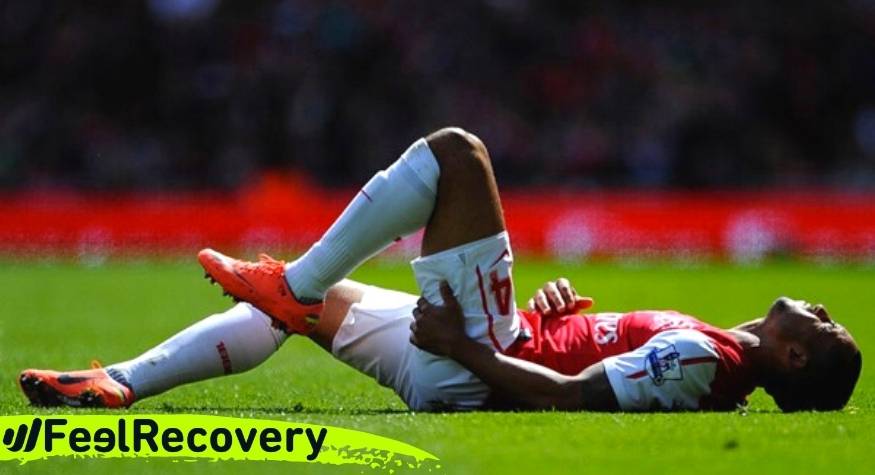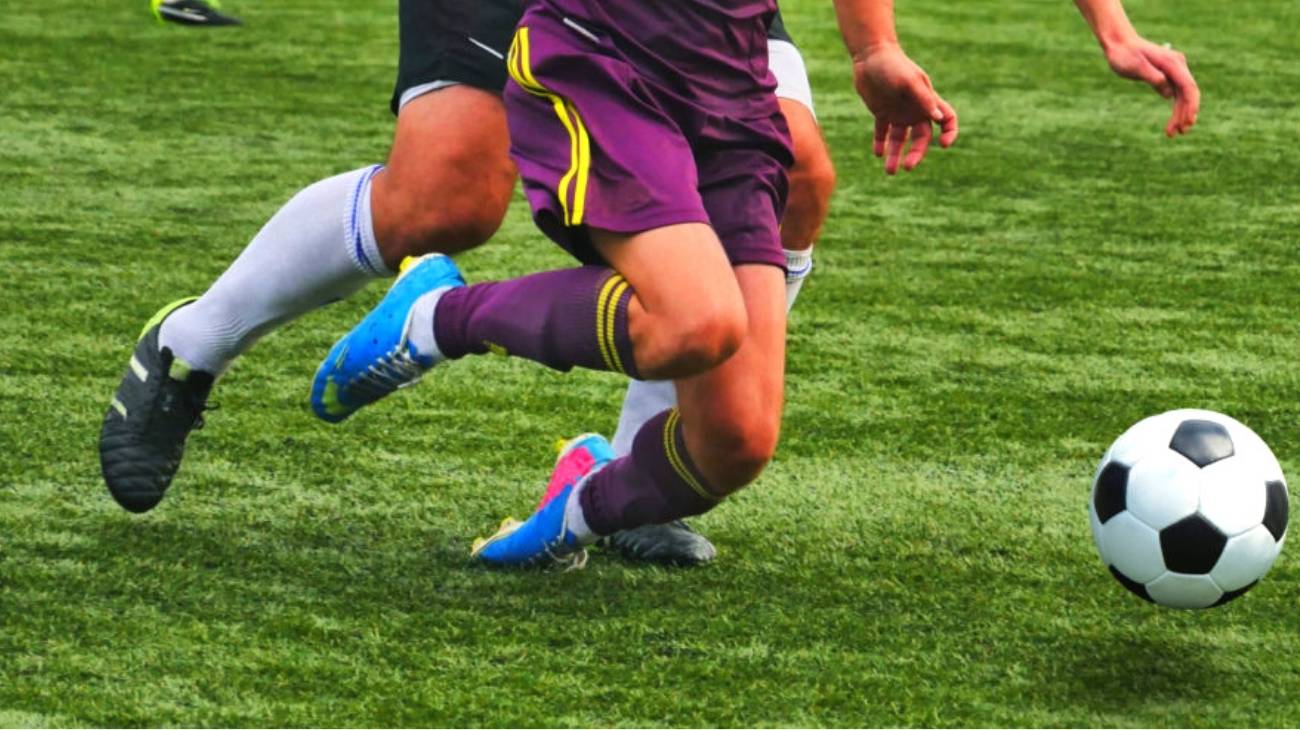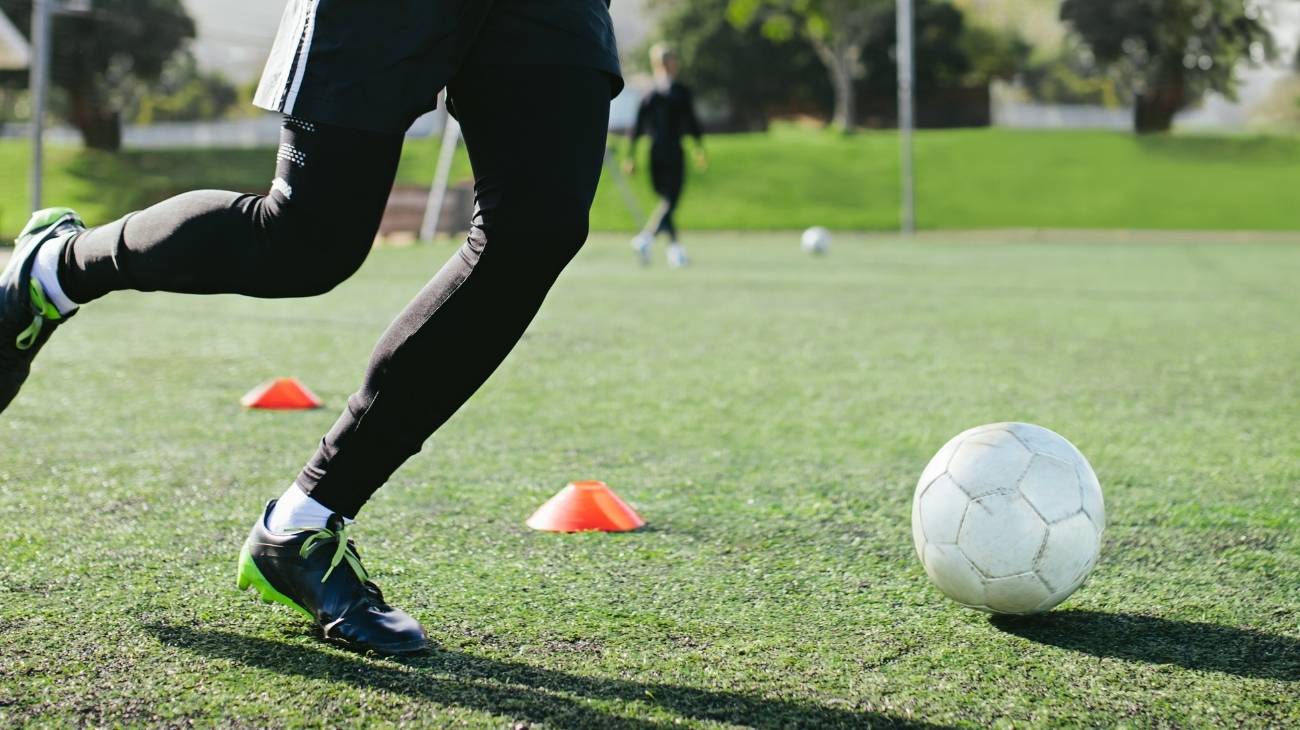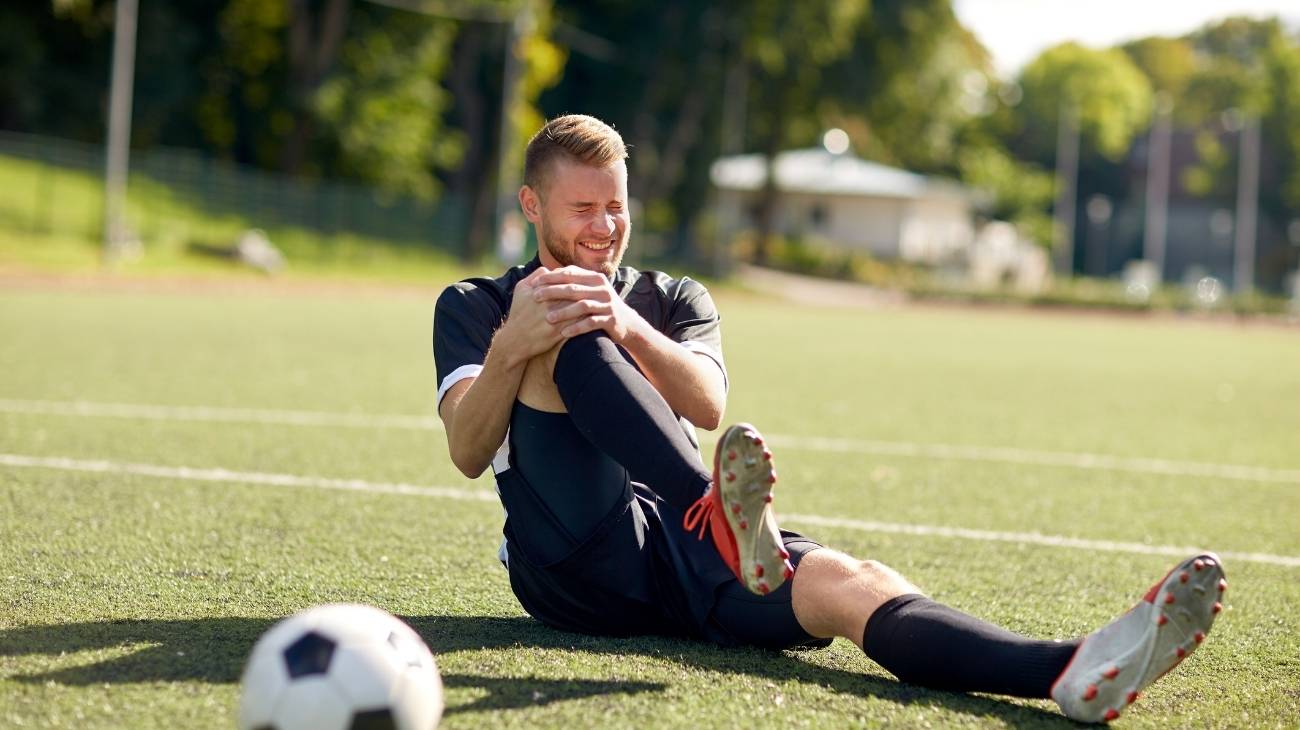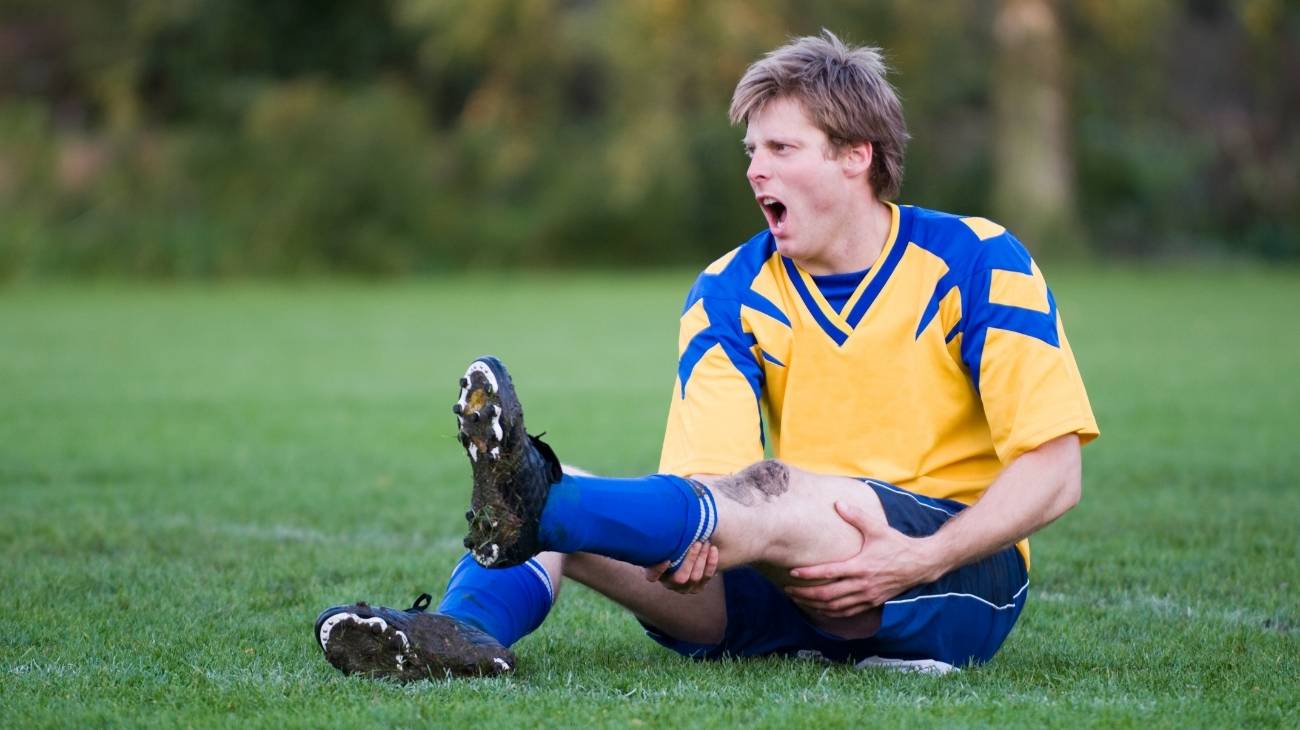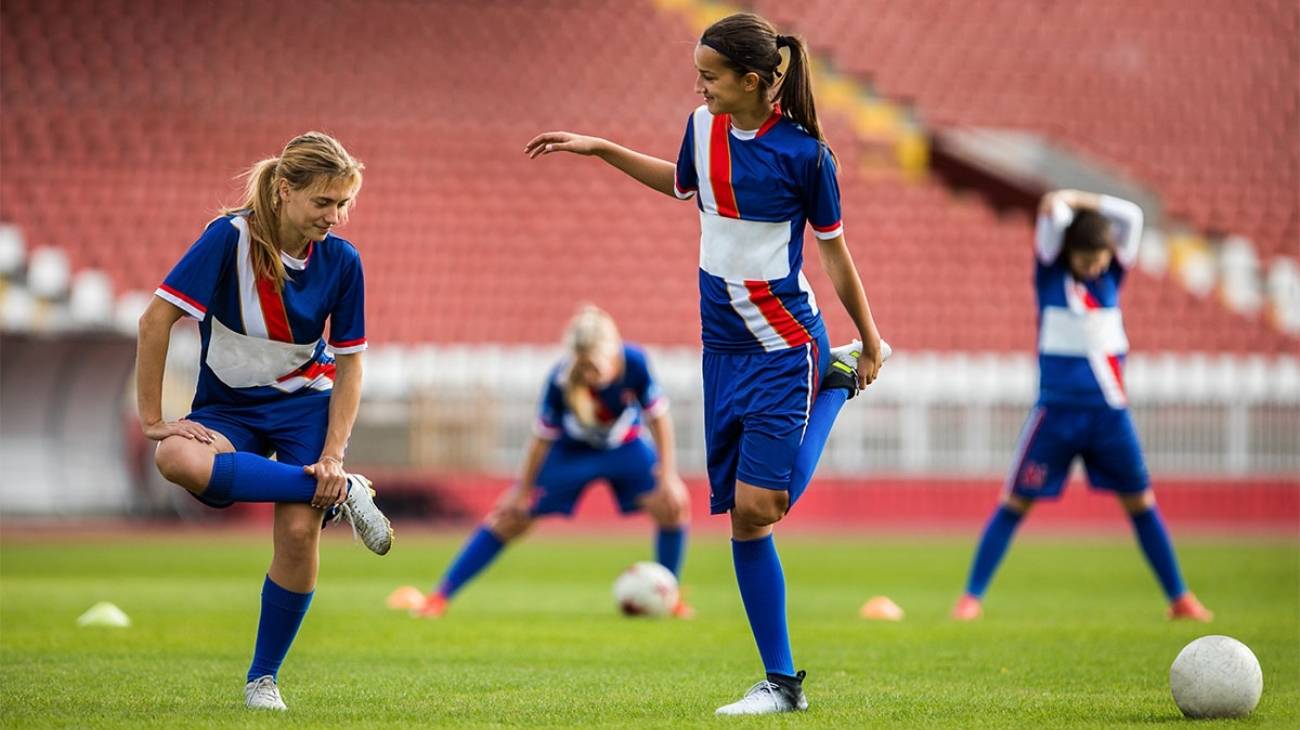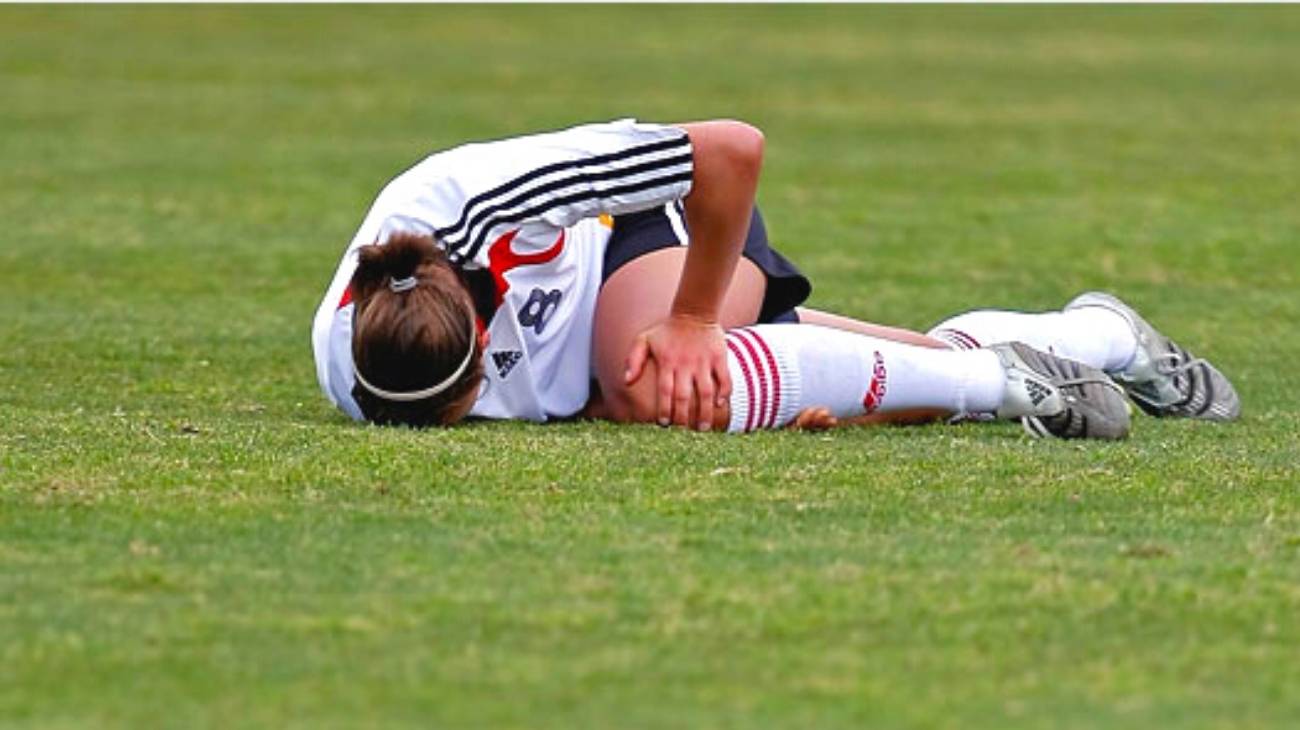In soccer, our legs allow us to reach high speeds and we can run, jump or change direction quickly. However, our legs are predisposed to various injuries due to the dynamics of soccer. They are also one of the parts in which soccer players suffer the most injuries.
This is because muscles such as the hamstrings and quadriceps are in constant use and are prone to knocks, trauma and injuries of all kinds.
What are the most common types of leg injuries when playing soccer?
Leg injuries are usually muscular, especially in the hamstrings and quadriceps as these are the muscles responsible for providing power to the short and long runs that are constantly performed during a match.
Here are some of the most common leg injuries:
Quadriceps injury
The quadriceps muscle tear is one of the injuries that affect not only soccer players, but also most people who play contact sports. The quadriceps are located in the front part of the leg and their contraction allows us to walk or run, so a blow to the quadriceps can have consequences. In the case of soccer players, they are much more exposed to this type of injury.
When there is a quadriceps tear, it is because the contusions received in that area cause the muscles to collide with the bone, thus generating a break in the fibres of the muscles. This injury is usually very painful. However, you cannot know how serious it is until it is assessed. Therefore, if you are playing and you receive a blow to them and it causes you a lot of pain, it is advisable to stop the activity and go to a doctor to carry out tests to determine whether there is damage or not.
Biceps femoris injury
This injury is also called the sprinter's injury, as it is the fastest players who push these muscles to their limits. The biceps femoris is activated when the foot strikes the ground causing it to tighten and generating great force.
A ruptured biceps femoris generates a sharp pain in the back of the thigh towards the side, and its pain makes it impossible to continue any activity that includes walking, because it is very painful to even try to bend the knee. Recovery time varies according to the severity of the injury and can be up to 4 months of inactivity.
Hamstring strain
Have you ever seen when a soccer player is running and touches the back of his leg? This is the famous "pinch", a very common injury after short explosive runs or long runs and with accumulated fatigue in the legs. When a fibre in these muscles is torn, the pain is usually severe, and if the necessary measures are not taken, it can worsen into a complete tear.
This injury represents 12% of the injuries suffered by soccer players and appears more frequently in those over 30 years of age. To avoid it, we only need to stretch the muscles well before training and strengthen them by doing different exercises for that specific area. Good nutrition and hydration are also important.
Injury to the thighs
The fibres of the muscles are exposed to strains, tears or contractures, due to different causes such as maximum demand on our muscles, poor support when we fall or various blows to the area due to sudden tackles by opponents trying to steal the ball from us.
These injuries can be prevented by warming up before playing or training, as we often start any of these activities without adequate preparation, making our muscles more susceptible to these injuries.
Best products for the recovery of leg injuries in soccer players
Bestseller
-
2 Calf Compression Sleeve (Black/Gray)
$19.95 -
2 Calf Compression Sleeve (Green/Navy)
$19.95 -
2 Calf Compression Sleeve (Pink/Bordeaux)
$19.95 -
2 Knee Compression Sleeve (Black/Gray)
$19.95 -
2 Knee Compression Sleeve (Green/Navy)
$19.95 -
2 Knee Compression Sleeve (Pink/Bordeaux)
$19.95 -
2 Patella Knee Strap (Black/Gray)
$14.95 -
2 Patella Knee Strap (Green/Navy)
$14.95 -
2 Patella Knee Strap (Pink/Bordeaux)
$14.95 -
2 Thigh Compression Sleeve (Black/Gray)
$19.95 -
2 Thigh Compression Sleeve (Green/Navy)
$19.95 -
2 Thigh Compression Sleeve (Pink/Bordeaux)
$19.95 -
Acupressure Mat and Pillow (Black/Gray)
$49.95 -
Acupressure Mat and Pillow (Green/Navy)
$49.95 -
Acupressure Mat and Pillow (Pink/Bordeaux)
$49.95 -
Acupressure Pillow (Black/Gray)
$29.46 -
Acupressure Pillow (Green/Navy)
$29.46 -
Acupressure Pillow (Pink/Bordeaux)
$29.46 -
Heating Pad for Microwave Classic Bottle Shaped (Hearts)
$19.95 -
Heating Pad for Microwave Classic Bottle Shaped (Oxford)
$19.95 -
Heating Pad for Microwave Classic Bottle Shaped (Sport)
$19.95 -
High Density Foam Roller for Muscle (Black/Gray)
$29.95 -
High Density Foam Roller for Muscle (Green/Navy)
$29.95 -
High Density Foam Roller for Muscle (Pink/Bordeaux)
$29.95 -
Ice Massage Roller Ball (Black)
$39.95 -
Ice Massage Roller Ball (Green)
$39.95 -
Ice Massage Roller Ball (Pink)
$39.95 -
Microwave Heating Pad for Back Pain Relief (Extra Large) (Hearts)
$29.95 -
Microwave Heating Pad for Back Pain Relief (Extra Large) (Oxford)
$29.95 -
Microwave Heating Pad for Back Pain Relief (Extra Large) (Sport)
$29.95 -
Microwaveable Heating Pad for Pain Relief (Hearts)
$19.95 -
Microwaveable Heating Pad for Pain Relief (Oxford)
$19.95 -
Microwaveable Heating Pad for Pain Relief (Sport)
$19.95 -
Pack 2 In 1 Foam Roller High + Soft Density (Black/Gray)
$29.95 -
Pack 2 In 1 Foam Roller High + Soft Density (Green/Navy)
$29.95 -
Pack 2 In 1 Foam Roller High + Soft Density (Pink/Bordeaux)
$29.95 -
Soft Density Foam Roller for Recovery (Black)
$29.95 -
Soft Density Foam Roller for Recovery (Green)
$29.95 -
Soft Density Foam Roller for Recovery (Pink)
$29.95 -
Sport Compression Socks (1 Pair) (Black/Gray)
$19.95 -
Sport Compression Socks (1 Pair) (Green/Navy)
$19.95 -
Sport Compression Socks (1 Pair) (Pink/Bordeaux)
$19.95 -
Trigger Point Massage Stick (Black)
$14.95 -
Trigger Point Massage Stick (Green)
$14.95 -
Trigger Point Massage Stick (Pink)
$14.95
How to apply the RICE therapy to treat leg injuries in soccer players?
The PRICE therapy (formerly called RICE) is a practical way that will allow you to reduce the inflammation of the injury to help you in the recovery process.
Here we show you step by step how to apply it carefully:
- Protection: the first thing to do is to bandage the leg if it is a muscle break or even splint it if it is a fracture of the femur. This is to prevent the injury from being aggravated by trying to move it or receiving a second blow to it.
- Rest: until a doctor has checked us, we should rest completely and not move or use the affected leg any more, especially if we think we have suffered a muscle or bone fracture.
- Ice: with ice we can reduce inflammation thanks to its vasoconstriction effect, which will also minimise the pain generated by the tear, cramp, muscle break or femur fracture.
- Compression: Compression can be applied either with a bandage or with a compression garment, which in this case could be a knee brace, ankle brace or compression shorts to keep the swelling at bay.
- Elevation: finally, we must elevate the injured leg above the level of the heart, so that the blood flow to the injury is reduced and the swelling does not progress.
References
- Brophy, R., Silvers, H. J., Gonzales, T., & Mandelbaum, B. R. (2010). Gender influences: the role of leg dominance in ACL injury among soccer players. British journal of sports medicine, 44(10), 694-697. https://bjsm.bmj.com/content/44/10/694.short
- Gstöttner, M., Neher, A., Scholtz, A., Millonig, M., Lembert, S., & Raschner, C. (2009). Balance ability and muscle response of the preferred and nonpreferred leg in soccer players. Motor Control, 13(2), 218-231. https://journals.humankinetics.com/view/journals/mcj/13/2/article-p218.xml
- Elliott, M. C., Zarins, B., Powell, J. W., & Kenyon, C. D. (2011). Hamstring muscle strains in professional football players: a 10-year review. The American journal of sports medicine, 39(4), 843-850. https://journals.sagepub.com/doi/abs/10.1177/0363546510394647
- Mendiguchia, J., Alentorn-Geli, E., Idoate, F., & Myer, G. D. (2013). Rectus femoris muscle injuries in football: a clinically relevant review of mechanisms of injury, risk factors and preventive strategies. British journal of sports medicine, 47(6), 359-366. https://bjsm.bmj.com/content/47/6/359.short
- Markovic, G., Šarabon, N., Pausic, J., & Hadžić, V. (2020). Adductor muscles strength and strength asymmetry as risk factors for groin injuries among professional soccer players: A prospective study. International journal of environmental research and public health, 17(14), 4946. https://www.mdpi.com/1660-4601/17/14/4946
- Inklaar, H. (1994). Soccer injuries: I: incidence and severity. Sports medicine, 18, 55-73. https://link.springer.com/article/10.2165/00007256-199418010-00006
- Inklaar, H. (1994). Soccer Injuries: II: Aetiology and Prevention. Sports medicine, 18, 81-93. https://link.springer.com/article/10.2165/00007256-199418020-00002
- Ekstrand, J., & Gillquist, J. (1983). Soccer injuries and their mechanisms: a prospective study. Medicine and science in sports and exercise, 15(3), 267-270. https://europepmc.org/article/med/6621313
- Dvorak, J., & Junge, A. (2000). Football injuries and physical symptoms. The American journal of sports medicine, 28(5_suppl), 3-9. https://pubmed.ncbi.nlm.nih.gov/11032101/
- Faude, O., Rößler, R., & Junge, A. (2013). Football injuries in children and adolescent players: are there clues for prevention?. Sports medicine, 43, 819-837. https://link.springer.com/article/10.1007/s40279-013-0061-x

